- Selecting the Perfect Site
- 1. Sunlight
- 2. Soil Drainage
- 3. Soil pH
- 4. Air Drainage
- 5. Space
- 6. Protection from Wind
- Evaluating Sun Exposure
- 1. Sunlight Hours
- 2. Shading Structures
- 3. Observe Shadows
- 4. Orientation
- 5. Soil Moisture
- Assessing Soil Quality
- Soil Testing
- pH Level
- Drainage
- Nutrient Levels
- Texture
- Presence of Contaminants
- Preparing the Planting Hole
- Digging the Hole
- Amending the Soil
- Adding Organic Matter
- Compost
- Manure
- Cover Crops
- Mulching
- Planting the Peach Tree
- Question-answer:
- What is the best location for planting peach trees?
- Can peach trees grow in shade?
- How do I prepare the soil for planting peach trees?
- When is the best time to plant peach trees?
- Do peach trees need any special care?
- Video: Germinate Peach seed and plant in 14 days no cold stratification
Planting a peach tree can be a rewarding experience, as it can provide a bountiful harvest of delicious, juicy peaches for years to come. However, in order to ensure the tree’s health and maximize fruit production, it is crucial to choose the right location for planting. The location should provide optimal growing conditions, including proper sunlight exposure, soil quality, and drainage.
Sunlight exposure is essential for the healthy growth and fruiting of peach trees. Choose a location that receives full sun for at least 6-8 hours a day. Peach trees thrive in warm, sunny areas, so make sure there are no nearby buildings, trees, or other structures that could shade the tree during the day. Adequate sunlight exposure will promote the tree’s overall growth, flower production, and fruit development.
Soil quality is another important factor to consider when choosing a location for planting a peach tree. Peach trees prefer well-drained soil that is rich in organic matter. Test the soil’s pH level, as peach trees thrive in slightly acidic soil with a pH range of 6.0 to 6.5. If the soil is too alkaline, you may need to amend it with organic matter and sulfur to lower the pH level. Good soil preparation is vital for the tree’s root development, nutrient absorption, and overall health.
“Good soil preparation is vital for the tree’s root development, nutrient absorption, and overall health.”
Drainage is another crucial aspect to consider when choosing a location for planting a peach tree. Peach trees require well-drained soil to prevent waterlogged roots, which can lead to root rot and other diseases. Avoid areas with poor drainage or where water tends to accumulate, such as low-lying areas or heavy clay soils. To improve drainage, you can add organic matter or create raised beds.
By carefully choosing the right location for planting a peach tree, you can ensure that it will thrive and produce abundant fruit for many years to come. Consider the sunlight exposure, soil quality, and drainage when selecting the perfect spot for your peach tree, and enjoy the sweet rewards of your efforts.”
Selecting the Perfect Site
When it comes to planting a peach tree, selecting the right site is essential for ensuring abundant fruiting. Here are some key factors to consider:
1. Sunlight
Peach trees thrive in full sun, so it’s important to choose a location that receives at least 6-8 hours of direct sunlight each day. The more sunlight the tree gets, the better fruit production it will have.
2. Soil Drainage
Peach trees prefer well-draining soil to avoid waterlogged roots. Choose a site with soil that drains well, as waterlogged roots can lead to root rot and other diseases. Sandy loam or loamy soil types are ideal for peach trees.
3. Soil pH
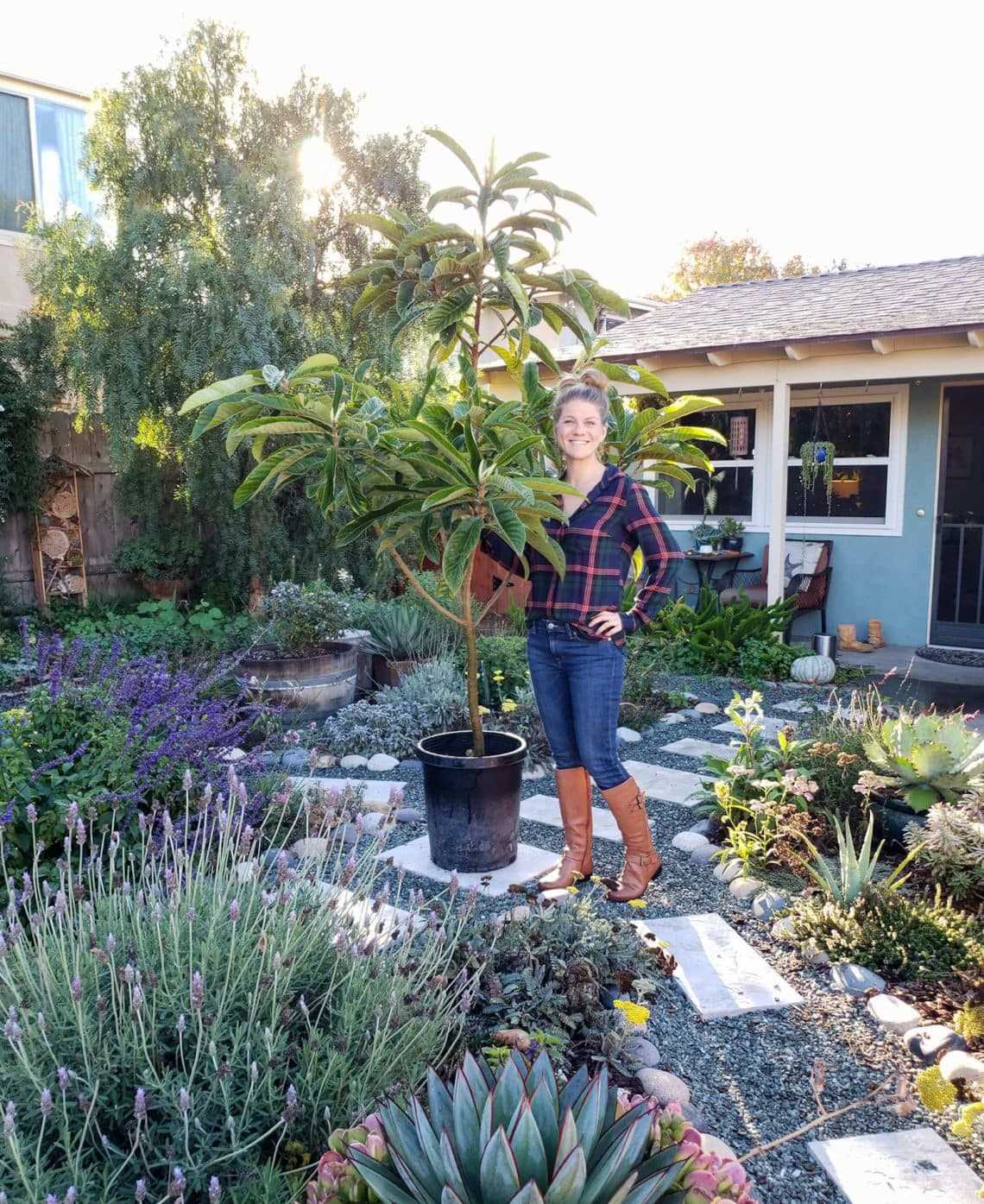
Peach trees do best in slightly acidic soil with a pH range of 6.0-6.5. Conduct a soil test to determine the pH of the site you are considering. If the soil is too alkaline, you may need to amend it with sulfur or other acidifying agents to lower the pH.
4. Air Drainage
Peach trees are susceptible to late spring frosts, which can damage blossoms and reduce fruit production. To minimize the risk of frost damage, choose a site with good air drainage, away from low-lying areas where cold air can accumulate.
5. Space
Peach trees require ample space to grow and spread their branches. Make sure to select a site with enough room for the mature size of the tree, which can reach up to 20 feet in height and spread.
6. Protection from Wind
Peach trees can be sensitive to strong winds, which can break branches and reduce fruiting. Consider planting the tree in a location that offers some protection from strong winds, such as near a fence or wall.
By taking these factors into account and selecting the perfect site, you can help your peach tree thrive and produce bountiful fruit for years to come.
Evaluating Sun Exposure
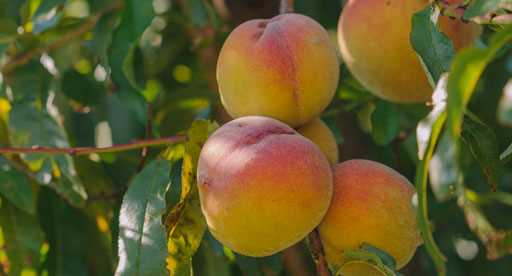
When choosing a location to plant your peach tree, it is important to evaluate the sun exposure in the area. Peach trees require full sun in order to produce an abundant fruiting. Here are some factors to consider when evaluating sun exposure:
1. Sunlight Hours
Measure the amount of sunlight hours the area receives. Peach trees require at least 6-8 hours of direct sunlight each day. If the area receives less sunlight, the tree may not produce as many fruits or the fruits may be smaller.
2. Shading Structures
Look for any shading structures in the area that may obstruct sunlight from reaching the peach tree. This can include buildings, trees, or other tall structures. If the tree is shaded for most of the day, it will not receive enough sunlight to thrive.
3. Observe Shadows
Observe the movement of shadows in the area throughout the day. If the area is heavily shaded or the shadows linger for a long time, it may not be suitable for planting a peach tree. Ideally, the area should have consistent sunlight exposure throughout the day.
4. Orientation
Consider the orientation of the area. South-facing locations tend to receive more sunlight than north-facing locations. If possible, choose a spot that is oriented towards the south to maximize sun exposure.
5. Soil Moisture
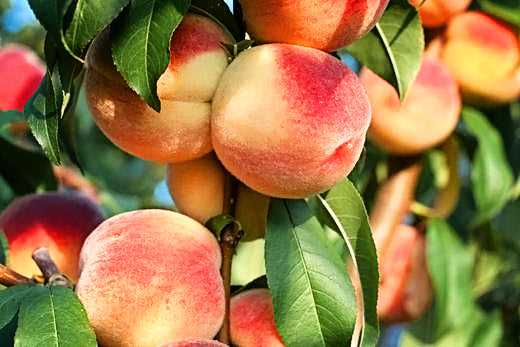
Check the soil moisture in the area. Excessively wet or waterlogged soil can be detrimental to the growth of the peach tree. Ensure that the area has good drainage and that water does not accumulate around the roots of the tree.
By evaluating the sun exposure in the area, you can choose the right location for your peach tree to ensure abundant fruiting and a healthy tree.
Assessing Soil Quality
Before planting a peach tree, it is important to assess the quality of your soil. The success of your peach tree largely depends on the soil conditions and its ability to provide the necessary nutrients and water.
Soil Testing
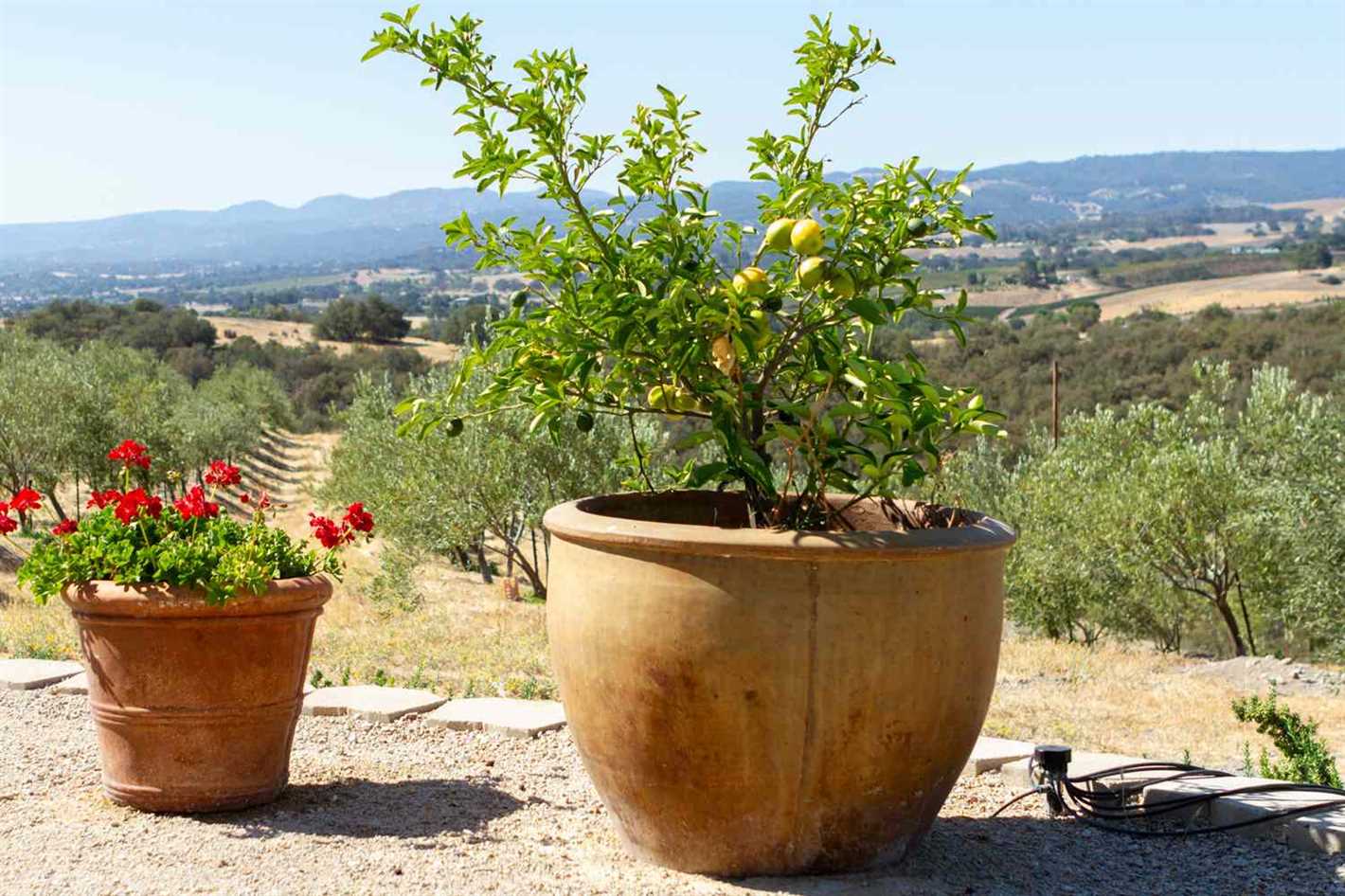
A soil test can provide valuable information about the composition of your soil and its nutrient levels. You can purchase a soil testing kit from a local garden center or send a soil sample to a laboratory for analysis. The soil test results will reveal the pH level, nutrient deficiencies, and other important information about your soil.
pH Level
The pH level of the soil is a measure of its acidity or alkalinity. Peach trees prefer a slightly acidic soil with a pH level between 6.0 and 6.5. If your soil is too acidic or alkaline, you may need to amend it to create the optimal conditions for your peach tree.
Drainage
Good drainage is crucial for peach trees as they do not tolerate waterlogged soil. If your soil retains water for extended periods, it may cause root rot and other diseases. Sandy or loamy soils usually have good drainage, while clay soils tend to hold water. You can improve drainage by adding organic matter such as compost or by creating raised beds.
Nutrient Levels
Peach trees require a range of nutrients for healthy growth and abundant fruiting. A soil test will help determine if your soil has adequate levels of essential nutrients such as nitrogen, phosphorus, and potassium. Based on the test results, you can add fertilizer or organic amendments to supplement any deficiencies.
Texture
The texture of your soil plays a role in water retention and aeration. Peach trees thrive in well-drained soils with good water-holding capacity. Sandy soils drain quickly and may require more frequent watering, while clay soils retain water but can become compacted. Loamy soils, which contain a mixture of sand, silt, and clay, are generally preferred for peach trees.
Presence of Contaminants
It is important to assess if your soil contains any contaminants that may affect the health of your peach tree. This can include heavy metals, pesticides, or other pollutants. If you suspect contamination, it is advisable to consult with a professional or contact your local agricultural extension office for guidance.
By thoroughly assessing the quality of your soil, you can make informed decisions about the necessary amendments and ensure optimal conditions for your peach tree to thrive and produce abundant fruit.
Preparing the Planting Hole
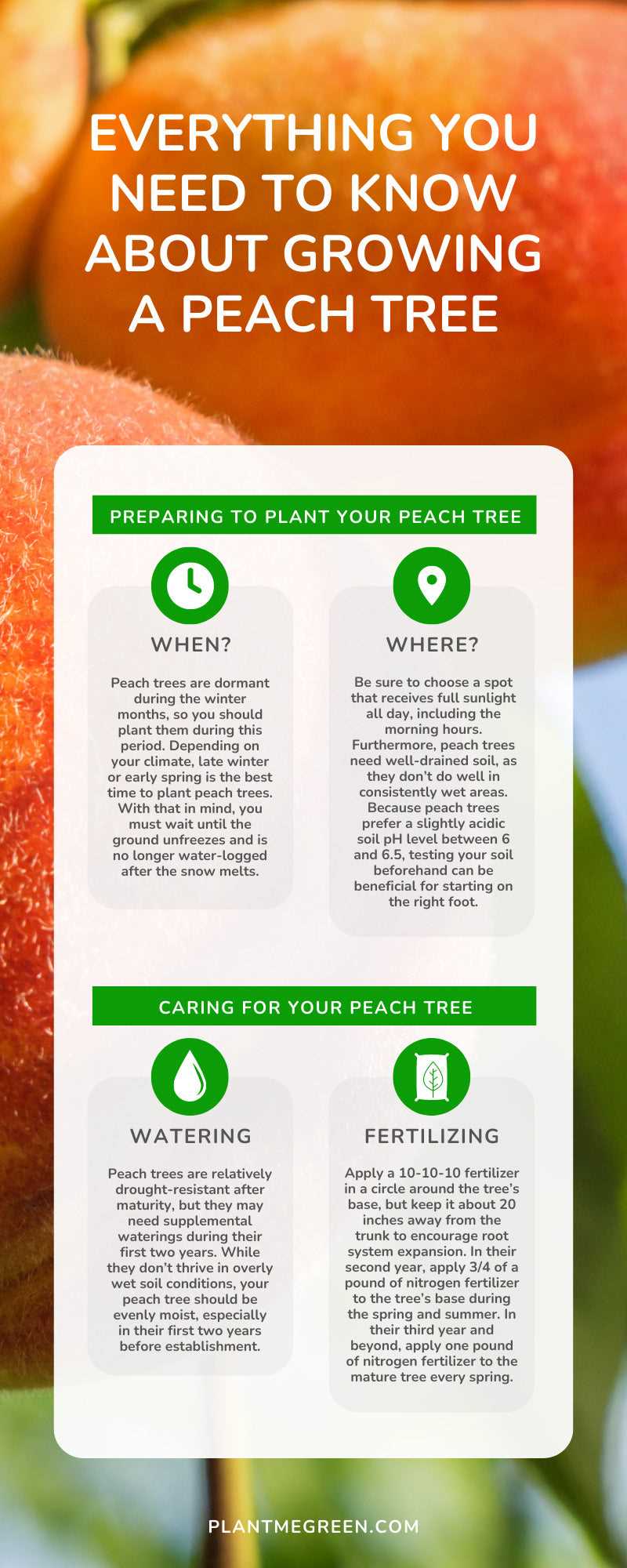
Before planting a peach tree, it is important to prepare the planting hole properly. This will provide the tree with a favorable environment for growth and help ensure abundant fruiting.
Here are the steps to prepare the planting hole:
- Choose a suitable location: Select a site that receives full sun and has well-draining soil. Peach trees thrive in sunny areas and require well-drained soil to prevent waterlogged roots.
- Clear the area: Remove any weeds, grass, or debris from the chosen site. This will help reduce competition for nutrients and water.
- Dig the hole: Dig a hole that is wide and deep enough to accommodate the peach tree’s root system. The hole should be at least twice as wide and slightly deeper than the tree’s root ball.
- Amend the soil: Mix organic matter, such as compost or well-rotted manure, into the soil removed from the hole. This will improve soil fertility, drainage, and water retention.
- Refill the hole: Place the peach tree in the center of the hole, making sure the bud union (the swollen area where the peach tree is grafted onto a rootstock) is slightly above the soil surface. Fill the hole with the amended soil, gently firming it around the roots to remove any air pockets.
- Water the tree: After planting, thoroughly water the peach tree. This will help settle the soil and provide moisture to the roots. It is important to keep the tree well-watered, especially during its first year of growth.
By properly preparing the planting hole, you are providing the peach tree with a good start and setting it up for successful growth and abundant fruiting in the future.
Digging the Hole
Before planting a peach tree, it is important to dig the right size hole. The hole should be wide enough to accommodate the spread of the roots and deep enough so that the graft union is above the soil line.
To start, measure the size of the rootball and mark the dimensions on the ground. Using a shovel, dig a hole that is twice as wide as the rootball and slightly shallower than the height of the rootball. This will ensure that the roots have enough space to spread out and establish easily.
When digging the hole, make sure to remove any rocks, debris, or grass that may interfere with the growth of the peach tree. Additionally, loosen the soil at the bottom of the hole to promote good drainage.
It is important to note that peach trees prefer well-drained soil, so if the natural soil is heavy or clay-like, it may be necessary to amend it with organic matter such as compost or peat moss to improve drainage.
Once the hole is dug, carefully lower the peach tree into the hole, making sure that the graft union is above the soil line. Gently spread out the roots and backfill the hole with soil, tamping it down lightly to remove any air pockets.
After planting, water the peach tree thoroughly to settle the soil and provide moisture to the roots. Mulching around the base of the tree will help retain moisture and suppress weed growth.
Remember to give your newly planted peach tree regular water and proper care to ensure healthy growth and abundant fruiting.
Amending the Soil
Before planting your peach tree, it is important to amend the soil to provide the optimal conditions for growth and fruit production. Here are some steps to follow:
- Test the soil: Before making any amendments, it is essential to test the pH level and nutrient content of the soil. This will help you determine which amendments are necessary.
- Adjust the pH level: Peach trees prefer slightly acidic soil with a pH range between 6.0 and 6.5. If the pH is too high or low, you can adjust it by adding lime to raise the pH or sulfur to lower it.
- Improve drainage: Peach trees require well-draining soil to prevent waterlogging and root rot. If your soil has poor drainage, consider adding organic matter such as compost or peat moss to improve water flow.
- Add organic matter: Incorporating organic matter into the soil can help improve its structure and fertility. Compost, well-rotted manure, or leaf mold are excellent options for enriching the soil with nutrients and promoting microbial activity.
- Provide essential nutrients: Peach trees have specific nutrient requirements, especially for phosphorus, potassium, and nitrogen. Based on the soil test results, you may need to add fertilizers or amendments to ensure the tree gets the necessary nutrients for healthy growth and fruiting.
Remember to follow the instructions on the soil test report and fertilizers carefully to avoid over-application, which can harm the tree and the environment. It is also important to mix the amendments thoroughly with the existing soil to ensure proper distribution.
By amending the soil before planting, you can create an optimal growing environment for your peach tree and increase the chances of abundant fruit production.
Adding Organic Matter
Adding organic matter to the soil is a crucial step in preparing the planting site for your peach tree. Organic matter not only improves the soil structure, but it also provides essential nutrients for the tree’s growth and fruit production. Here are some ways you can add organic matter to the soil:
Compost
One of the best sources of organic matter is compost. Compost is made by decomposing organic materials such as kitchen scraps, yard waste, and leaves. Spread a 2-3 inch layer of compost over the planting area and mix it into the top 6-8 inches of soil using a garden fork or tiller. This will help improve soil fertility and drainage.
Manure
Another option is to add well-rotted manure to the soil. Manure contains a variety of nutrients that are beneficial for the peach tree. Spread a layer of manure over the planting area, about 2-4 inches thick, and mix it into the soil. Make sure that the manure has been aged for at least several months to avoid burning the roots of the tree.
Cover Crops
Planting cover crops like clover or buckwheat can also enrich the soil with organic matter. These crops can be planted during the growing season prior to planting the peach tree. Allow the cover crops to grow for a few weeks, then cut them down and till them into the soil. This will add organic matter and improve soil structure.
Mulching
Mulching around the base of the peach tree is another way to add organic matter to the soil. Spread a layer of organic mulch, such as wood chips or straw, around the tree, leaving a gap around the trunk to prevent rot. Mulch helps retain moisture, suppress weeds, and slowly decomposes, adding organic matter to the soil over time.
Adding organic matter to the soil is an investment in the long-term health and productivity of your peach tree. It improves soil fertility, enhances moisture retention, and supports beneficial microbial activity. By following these tips, you can create a nutrient-rich environment for your peach tree to thrive and produce abundant fruit.
Planting the Peach Tree
Once you have chosen the right location for your peach tree, it’s time to start planting. Follow these steps to ensure proper planting:
- Prepare the soil: Peach trees require well-drained soil with a pH level between 6.0 and 6.5. Test the soil in the chosen location to determine its pH level. If necessary, amend the soil with compost or other organic matter to improve its drainage and acidity.
- Dig the hole: Dig a hole that is wide and deep enough to accommodate the root ball of the peach tree. The hole should be at least twice the width of the root ball and the same depth.
- Inspect the roots: Before planting, carefully inspect the roots of the peach tree. Trim any damaged or dead roots with clean and sharp pruning shears.
- Place the tree: Lower the peach tree into the hole, ensuring that the base of the trunk is level with or slightly above the surrounding soil. Spread out the roots in a natural position.
- Backfill the hole: Fill the hole with the soil that was removed, pressing it firmly around the roots to eliminate any air pockets. Build a small mound of soil around the base of the tree to create a watering basin.
- Water: After planting, thoroughly water the peach tree and the surrounding soil. This will help settle the soil and ensure good root-to-soil contact.
- Mulch: Apply a layer of organic mulch around the base of the tree, leaving a small gap between the mulch and the trunk. This will help retain moisture and suppress weed growth.
- Stake the tree (if necessary): If your peach tree is bare-root or has a small root system, it may require staking to keep it stable. Drive a stake into the ground near the base of the tree and use soft ties to loosely attach the trunk to the stake.
After planting, continue to water the peach tree regularly, especially during dry periods. Monitor the tree for any signs of stress or disease, and provide proper care to ensure healthy growth and abundant fruiting.
Question-answer:
What is the best location for planting peach trees?
The best location for planting peach trees is in an area with full sun, well-drained soil, and protection from strong winds.
Can peach trees grow in shade?
No, peach trees require full sun to thrive and produce abundant fruit. They will not grow well in shade.
How do I prepare the soil for planting peach trees?
Before planting peach trees, it is important to prepare the soil by loosening it and removing any weeds or grass. Additionally, adding organic matter such as compost or well-rotted manure can improve the soil quality.
When is the best time to plant peach trees?
The best time to plant peach trees is in late winter or early spring, after the danger of frost has passed. This allows the tree to establish its roots before the growing season begins.
Do peach trees need any special care?
Yes, peach trees require regular watering, especially during dry periods, and annual pruning to promote good air circulation and fruit production. They may also benefit from fertilization in the early spring.







